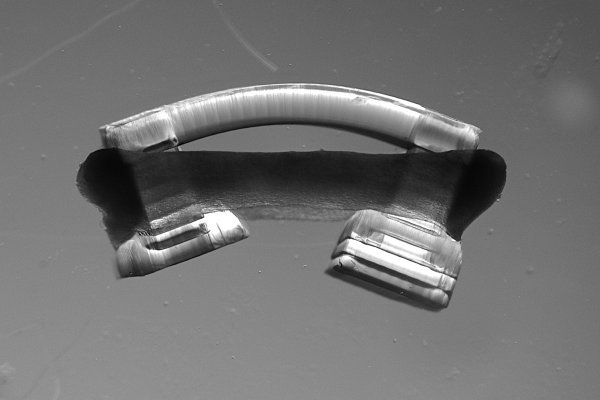«Light is a noninvasive way to control these machines," Bashir said. «It gives us flexibility in the design and the motion. The bottom line of what we are trying to accomplish is the forward design of biological systems, and we think the light control is an important step toward that.»
Bashir’s group previously demonstrated
The researchers begin by growing rings of muscle tissue from a mouse cell line. The muscle cells have a gene added so that a certain wavelength of blue light stimulates the muscle to contract, a technique called optogenetics. The rings are looped around posts on
See a video on YouTube showing the
«The skeletal muscle rings we engineer are shaped like rings or rubber bands because we want them to be modular," said graduate student Ritu Raman, the first author of the paper. «This means we can treat them as building blocks that can be combined with any
In addition to the modular design, the thin muscle rings have the advantages of allowing light and nutrients to diffuse into the tissue from all sides. This contrasts with earlier
The researchers tried skeletons of a variety of sizes and shapes to find which configurations generated the most net motion. They also exercised the muscle rings daily, triggering the muscle with a flashing light, to make them stronger so that the bots moved farther with each contraction.
«This is a much more flexible design," Bashir said. «With the rings, we can connect any two joints or hinges on the

This work was part of the Emergent Behaviors of Integrated Cellular Systems project, funded by the National Science Foundation. EBICS received a
Bashir also is affiliated with the Micro and Nanotechnology Laboratory, the departments of electrical and computer engineering and of mechanical science and engineering, the Frederick Seitz Materials Research Laboratory and the Institute for Genomic Biology at the U. of I.


